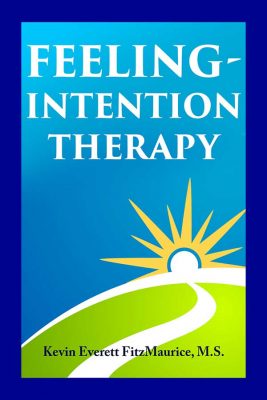REBT Deeper than CBT, CT, & Major Theories
- Garden will teach you an easy and effective Cognitive Behavioral Therapy (CBT & REBT) system.
REBT Deeper: than CBT, CT, DBT, and other major theories for ten primary reasons. Learn more about REBT to become an effective counselor.
REBT practitioners are encouraged to read Not.
- To oversimplify, Not will help you target “musturbatory” thinking (a.k.a. demandingness) more effectively by targeting “must not” instead of any and every strong “must.”
“REBT is a conscious practice of moving clients to achieve greater unconditional self-acceptance (USA), unconditional other-acceptance (UOA), and unconditional life-acceptance (ULA), which makes it deeper and more effective than other therapies.” —Kevin Everett FitzMaurice
“Your parents, friends, and culture often encouraged you to damn yourself, others, and the world. In spite of your biology, your family, and your culture you don’t need to stupidly disturb yourself.” —Albert Ellis
- Read and discover the best diagrams and maps of how people play games with your mind and heart.
- REBT Deeper: This modern system is even deeper.
REBT Deeper: 7 Philosophical Reasons: 7 of the 10 Reasons
“To help people achieve the three basic REBT philosophies of unconditional self-acceptance, unconditional other-acceptance, and unconditional life-acceptance, cognitive, emotional, and behavioral methods, which are described in this monograph, are used.” ―Albert Ellis, Rational Emotive Behavior Therapy
“It’s in our biological and learned nature for people to fall back to their dysfunctional beliefs all their lives and not to be completely rational or functional.” —Albert Ellis, All Out!, p. 549
REBT Deeper: List of 7 of 10 Reasons
- REBT works with underlying identity issues by continually teaching USA, unconditional self-acceptance.
- REBT works with underlying relationship issues by continually teaching UOA, unconditional other-acceptance.
- REBT works with underlying existential issues by continually teaching ULA unconditional life-acceptance.
- REBT works to recognize and remove the models common to all self-disturbing and self-defeating thinking by emphasizing the nature of thinking over the content of thinking.
- REBT has always taught counselors to focus on metacognitions, which are thoughts that direct or interpret other thoughts. REBT does this by first focusing on the client’s problem about their problem (for example, their anxiety about their anxiety).
- REBT has a theory of human motivation that accounts for the existence of human problems. (See the article “The Biological Basis of Human Irrationality” in the Journal Individual Psychology, vol. 32, pp. 145-168, 1976. Reprints are available from the Albert Ellis Institute: www.albertellisinstitute.org.
- REBT is a true depth psychology instead of simplistic behavioral psychology because REBT works like Eastern psychology to uproot the human ego instead of fake depth psychologies, such as one of the psychodynamic therapies, which only work for ego adjustment and adaptation.
- (See the article “RET Abolishes Most of the Human Ego.” Psychotherapy: Theory, Research and Practice. 13:4, 343-348. 1976. Reprints are available from the Albert Ellis Institute: www.albertellisinstitute.org.
REBT Deeper: 2 Practice Reasons: 8 & 9
- Requires an understanding of REBT’s ABCs of Emotions.
Reasons 8 & 9
- This section requires an understanding of REBT’s ABCs of Emotions.
- It is important to emphasize one of the major differences between REBT and other cognitive therapies such as CT and CBT: CT and CBT typically dispute the B about the A, trying to lessen the emotional upset by lessening the distorted view of the event, A.
- As Albert Ellis often put it, REBT disputes B about A more elegantly, trying to lessen the emotional upset by lessening B’s inflexible and extremely negative nature.
- REBT may not only accept the distorted view of A at first but often exaggerates the distortion of A to absurdity to teach the point that, even if A is a real pain, B does not have to be an additional pain source.
- Or, as FitzMaurice tells his clients, “Why double your trouble? Isn’t it already bad enough that you have a painful A? Why give yourself a painful B to go along with it?!”
- Once the self-defeating effect of B is sufficiently reduced, REBT will also concern itself with removing distortions of A at B and even problem-solving A. Ellis characterized this as the “elegant solution” of REBT.
First Practice Reason: #8
- Here is an important point that is lost even on some of the trainers from the NYC Institute.
- REBT works mostly on the nature of B rather than on the mere content of B (which is what CT and CBT do).
- This focus on the nature of B leads to greater generalization or application of therapeutic gains, including insight, awareness, feeling, and behavioral change.
Focusing on Content vs. Focusing on Composition
- In CT—you focus on the content of the B rather than on the nature of the B, then you must approach each B individually.
- Disputing one particular B only teaches you how to dispute similar Bs.
- However, if—as in REBT—you focus on the nature of the B, then you can approach any B with the same fundamental tests for rationality, helpfulness, logic, and reality.
Rationality
- Tests for rationality (such as flexibility versus rigidness and acceptance versus demandingness) can be applied generally.
- The tests developed in CT are less efficient, effective, and forceful because they target the side effects rather than the goals of thinking.
ABC Example Scenario
A = client receives a compliment.
B = client discounts and denies the compliment.
A + B = C
C = client feels unworthy and unappreciated.
CT Focus
- CT might focus on the content of B as the client’s use of the thinking error of minimizing.
- CT would then help the client to see how minimizing and discounting compliments keeps them stuck, feeling unworthy and unappreciated.
- This focus can be valuable and helpful learning for the client, who now has the opportunity to learn to use minimization less—at least when receiving compliments.
REBT Focus
- REBT might focus on the nature of the B as an example of using the irrational thinking of absolutism, extremism, or rigidness.
- REBT would then help the client to see how their use of rigid thinking with problems, issues, and relationships in their life leads to manifold problems, such as intolerance, misunderstandings, rejection, and unnecessary conflicts.
- Now, the client understands how a rigid attitude and approach to life is interfering with their life goals, health, and happiness.
- The client now has the opportunity to make a philosophical change to practice more flexibility, openness, and tolerance in their life for a generally improved life.
Second Practice Reason: #9
- REBT’s approach is deeper because it teaches clients first to stop disturbing themselves rather than first to try to get the world to stop disturbing them.
- Once clients are less disturbed, they are naturally better able to realistically and practically work at making their world more convenient, friendly, and nurturing.
- Not surprisingly, clients who focus on not upsetting themselves first find that they have fewer counseling issues.
REBT Deeper: Because of Its Emotional Realism
10th Reason
- REBT recognizes that some emotions are helpful, and some are hurtful.
- For instance, REBT sees extreme negative emotions (such as depression and anxiety) as hurtful. Still, REBT also sees mild to moderate negative emotions (such as mild regret or concern as helpful).
- Other counseling theories often make the foolish and unrealistic claim that all emotions are okay, even though some emotions lead to violence and abuse. In contrast, some other emotions lead to peace and compassion.
- While most therapies work to help clients overcome and move beyond certain types of feelings, only REBT is honest and straightforward enough to list feelings as healthy or unhealthy.
Fake Confirmation of Feelings
- Most therapies say that all feelings are acceptable, but then they hypocritically try to help you get past ones that you or they find disturbing.
- REBT believes that some feelings indicate you overreact due to your irrational thinking.
- Hence, REBT lists what feelings it theorizes are self-defeating and suggests alternative feelings.
Feelings Vary
- REBT neither implies nor wishes that you have fewer feelings.
- REBT neither implies nor claims that you can have only positive feelings.
- However, REBT promotes the belief that many feelings are extreme, exaggerated, or unhealthy responses that tend to make matters worse.
- You can often modify feelings to make them healthy instead of unhealthy by adding “a little,” “somewhat,” or “mildly” before them.
“REBT’s Insight No. 1 holds that you have both healthy and unhealthy emotions.” ―Albert Ellis, How To Stubbornly Refuse To Make Yourself Miserable About Anything–Yes, Anything!
REBT Deeper: Help Understanding Feelings
- For a chart listing examples of both feelings, please read either Journal Journey from Ego or What’s Your Story?
- Related Page: 9 Feeling Superstitions of Counselors & Therapists
- 13 Feeling Superstitions of Counselors & Therapists can be found in Stiffer: Stoic Mind.
- The best understanding of feelings can be found in Feeling-Intention Therapy.
- Read and master the life skill of acceptance using the best combination of CBT, REBT, & Stoicism.
- REBT Deeper: This modern system is even deeper.
REBT Deeper: 10 Reasons
- The information on this page can be found in both Journal Journey from Ego and What’s Your Story?
- REBT, Rational Emotive Behavior Therapy, is a deeper form of psychotherapy than its main look-alikes: Cognitive Therapy (CT) and Cognitive Behavioral Therapy (CBT).
REBT Deeper: Table Version of 10 Reasons
- Click for a list of pages on CBT & REBT.
- Read and master the life skill of acceptance using the best combination of CBT, REBT, & Stoicism.
- REBT Deeper: This modern system is even deeper.
REBT Deeper: REBT IS INTEGRATIVE, NOT ECLECTIC
- Eclectic means you can do whatever whenever. It means you have an excuse not to master one theory and to dabble in many counseling theories.
- It also means you do not have a rudder, a guide, or a goal to focus your therapy efforts on.
- Integrative means you must master one theory and then bring other counseling theories to support that theory as you develop your style and skills as a counselor.
- You always have a rudder, a guide, or a goal to focus your therapy efforts on when you get lost or unsure of which turn to take.
- REBT is itself integrative, not electric.
- REBT is based on Stoicism (emotional responsibility), General Semantics (physical realities over verbal realities), Humanistic principles (unconditional acceptance of self and others), Existential principles (unconditional acceptance of life), and Eastern psychology principles (ego and self-esteem reduction towards elimination and detachment from your mental flow).
- REBT’s lists of irrational beliefs can be easily reworded into scripts such as those proposed by Transactional Analysis based on ideas from Adlerian psychology.
- For examples of such scripts, visit this page.
- Ellis repeatedly credited Stoicism and General Semantics, as well as other sources, for his development of REBT.
- Read and master the life skill of acceptance using the best combination of CBT, REBT, & Stoicism.
- REBT Deeper: This modern system is even deeper.
REBT Deeper: Directly Related Quotations
“A mature person is one who does not think only in absolutes, who is able to be objective even when deeply stirred emotionally, who has learned that there is both good and bad in all people and in all things.” —Eleanor Roosevelt
“Happiness does not depend on outward things, but on the way we see them.” —Leo Tolstoy
“The character of a person is determined by how they respond internally regardless of external forces.” —Kevin Everett FitzMaurice
“The truth is what is. And what should be is a fantasy—a terrible fantasy.” —Lenny Bruce
- Read and master the life skill of acceptance using the best combination of CBT, REBT, & Stoicism.
- REBT Deeper: This modern system is even deeper.
REBT Deeper: Related Pages of Free Information
- 7 Thinking Errors of CT
- 9 Fundamental Thinking Errors
- Albert Ellis: “New Yorker” Article
- Albert Ellis: Rated Second Most Influential Psychotherapist
- CBT, CT, & REBT Cognitive Psychotherapies: List Pages
- Cognitive Psychotherapy Quotations
- Counseling Issues: Free Help
- Counselor’s & Therapist’s Feeling Superstitions
- Musts: Friend & Foe
- REBT (Rational Emotive Behavior Therapy): List Pages
- REBT’s 10 Must Scripts for Life
- REBT’s 11 Irrational Beliefs
- REBT’s ABCs of Emotions
- REBT Video Demonstrations Online
- REBT Website (www.albertellisinstitute.org)
- Shoulds & Musts
- Read and discover the best diagrams and maps of how people control and manipulate you.
- Read and master the life skill of acceptance using the best combination of CBT, REBT, & Stoicism.
- REBT Deeper: This modern system is even deeper.
REBT Deeper: 6 Groups of Topics Menu
- 1. Pages by Topic
- 2. Fast-Facts by Topic
- 3. Quotations by Topic
- 4. Poems by Topic
- 5. Scripture by Topic
- 6. Websites by Topic
- Read and master the life skill of acceptance using the best combination of CBT, REBT, & Stoicism.
- REBT Deeper: This modern system is even deeper.
REBT Deeper: 9 Skills & Topics Menu
- 1. Anger Skills & Topics
- 2. Blame Skills & Topics
- 3. Communication Skills & Topics
- 4. Coping Skills & Topics
- 5. Counseling Skills & Topics
- 6. Praying Skills & Topics
- 7. Recovery Skills & Topics
- 8. Responsibility Skills & Topics
- 9. Thinking Skills & Topics
- Read and master the life skill of acceptance using the best combination of CBT, REBT, & Stoicism.
- REBT Deeper: This modern system is even deeper.




